Virtual Desktop as a Service Enterprises: Hybrid is the future
Introduction
A hybrid platform is the new norm for enterprises, which offers organizations access to all public and private cloud. It enables organizations to address several business challenges and allow data and applications to consistently move between on-prem to cloud or any cloud provider. This allows using the most suitable resource for each scenario while centralizing management.
Let us first understand what a hybrid platform is. The pandemic has compelled organizations across the globe to turn to more advanced ways of managing teams and provide services to customers. During the pandemic, modernization in technology saw a revolution, which changed the way services were delivered to end users. Earlier, the inclination was towards private datacenters, whereas during and after the pandemic things changed drastically. Cloud became the preferred platform for all, and VDI became the lifeline of organizations. Access anywhere, anytime, became the new way of delivering services.
To keep up with the emerging trends, organizations wanted to offer their end users a balanced platform, with centralized management. As such, with the increase in demand for efficient operations, scalable and flexible model, secure and centralized management, and the new way of working, VDI or virtual desktop infrastructure has emerged as a preferred technology for providing IT services.
This technology allows secure delivery of desktop images and applications to end users, accessible from any device like PCs, tablets, smartphones, or thin client terminals.
How does VDI work?
Virtual desktops/machines are delivered to end users via a connection broker. It is a software that lets users access desktops or applications present in a data center.
All virtual desktops are “host-based”, which means they are centrally managed in a data center. Each virtual machine (VM) is created by a hypervisor, a main component that allow creating multiple VMs. With a VDI software platform, different desktop pools are grouped and made available for end users. Such a platform ensures easier management and configurations.
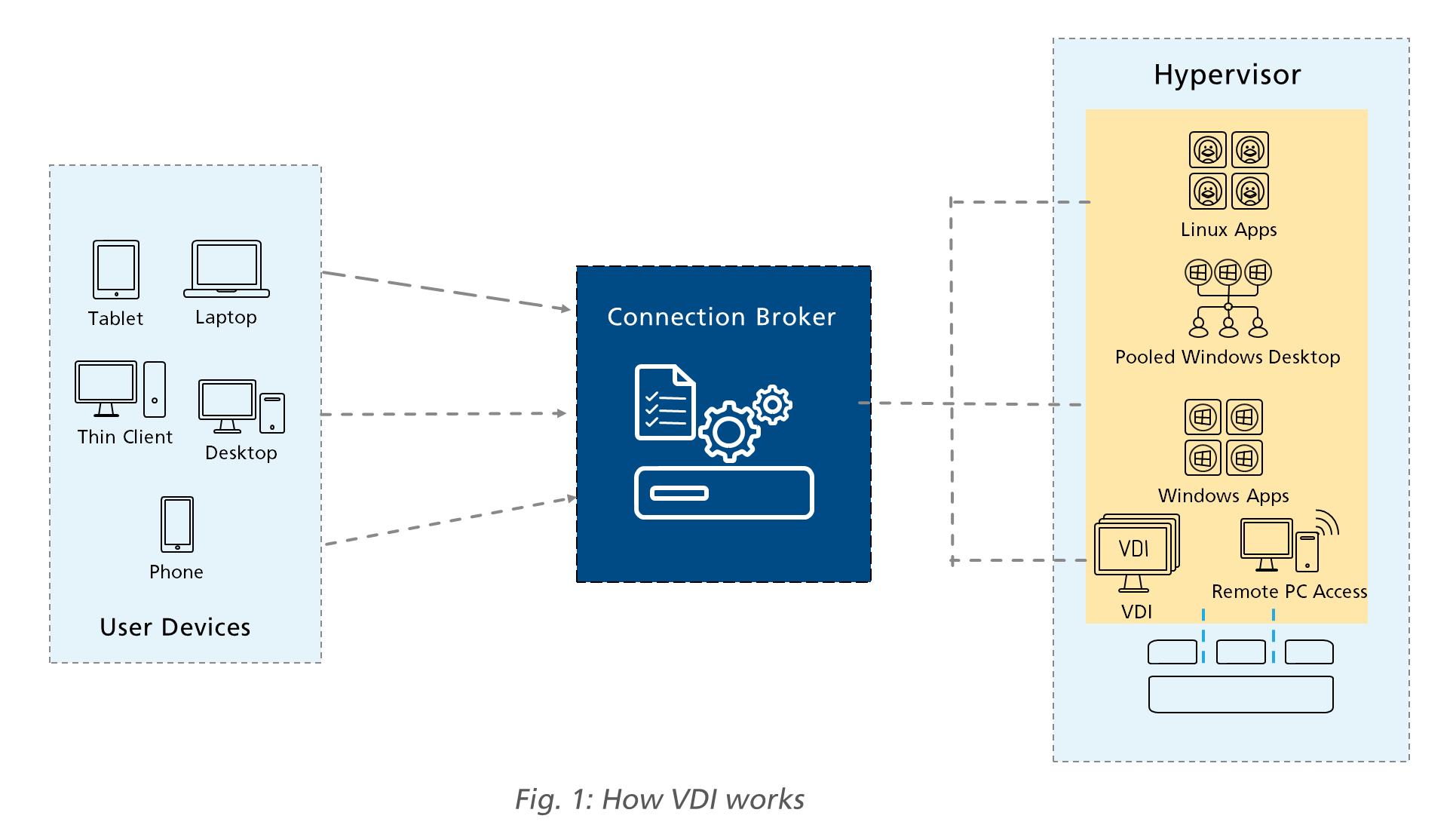
How are Virtual desktops served?
There are different ways in which a virtualized platform can be served to end users.
1. Persistent VDI: users are allocated a dedicated desktop, where any changes to applications and files are retained. Such a desktop is just like a personal one, except that it is in a virtual environment.
2. Non-Persistent: NP VDI delivers fresh desktops each time users login and does not let them save any changes. This facilitates minimal administration and management tasks for admins, which saves storage costs. This type of VDI is used for conducting limited or repetitive tasks, where customization is not needed.
3. Application Virtualization: applications are made available in a completely independent environment. They are installed on a centrally managed, virtualized system and only the applications are made available to the end users. Application virtualization allows multiple users to access an application simultaneously. Another advantage of an application virtualization software is that it lets users access applications installed on a computer from another one.
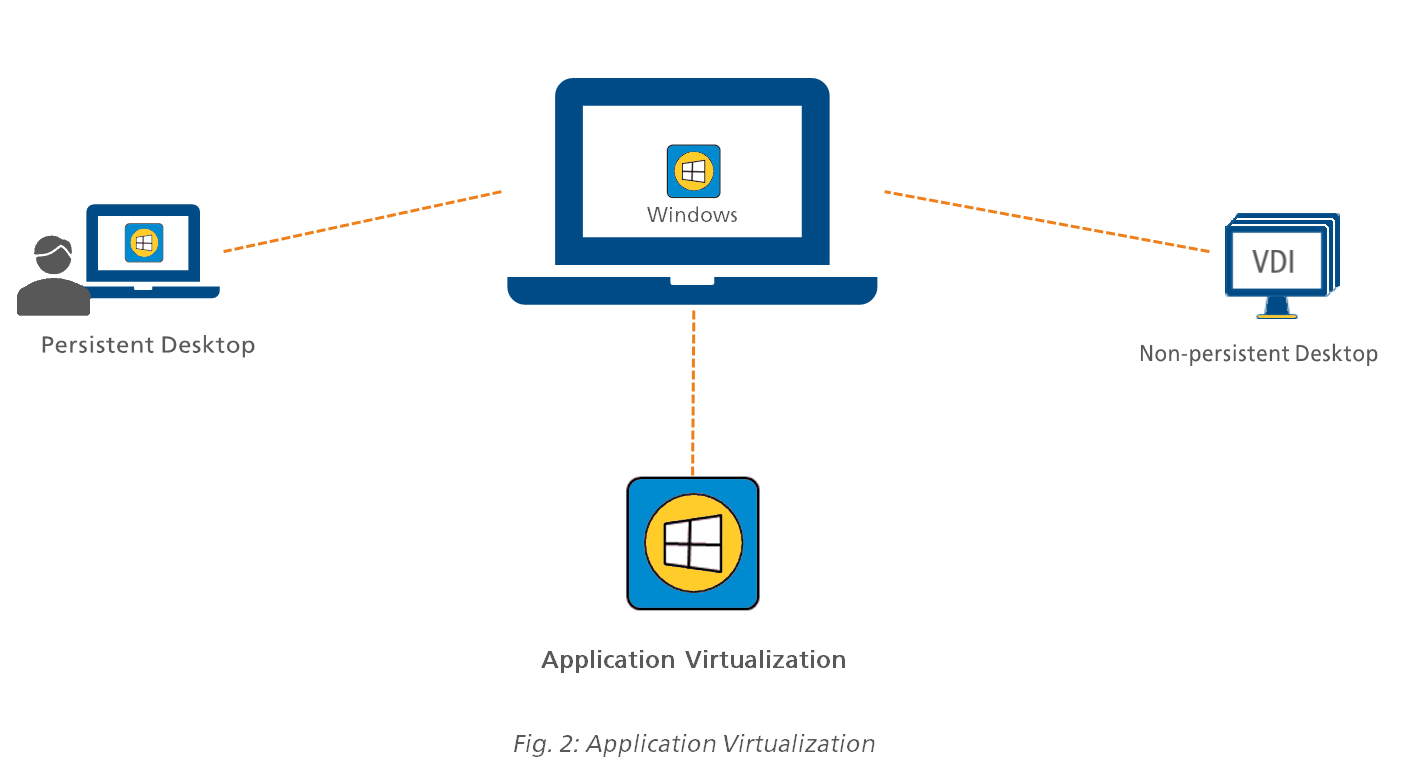
Benefits of VDI
1. Easy access: with a VDI solution, applications and desktops can be accessed from any device, anytime and anywhere.
2. Centralized Management: the biggest advantage of a VDI Solution is its centralized management, which allows organizations to track and update end devices easily. Administration and security management becomes simpler
3. Cost reduction: setting up VDI comes with minimal costs and significant cost savings in the long run. As it is centrally managed, all investment on hardware and software is on the data center and expenses on PC hardware are eliminated. With VDI it is possible to provision desktops with a single image, which brings substantial returns.
4. Data Security: with security being crucial, VDI solutions provide organizations with central management, wherein all the data is stored within a data center. This makes platforms secure, given that no data is stored within the local end point devices, thus minimizing data risks.
5. User Experience: VDI provides better user experience as the desktop image and applications are in close proximity to back-end databases, storage, and other application resources.
6. Quick On-Boarding: provisioning of VDI is easy and can be made available to users quickly. This improves organizational efficiency and agility
7. Instant Backup: in a centrally managed VDI solution, all the data resides within the data center, which makes protecting the data very easy. Instant backup of data is maintained at a physically distant location. In case of any contingency, the backed-up data can be easily restored.
8. Ease of Scalability: with a VDI Solution, it is possible to instantly scale up or scale down as compared to a traditional IT model.
VDI vs Desktop
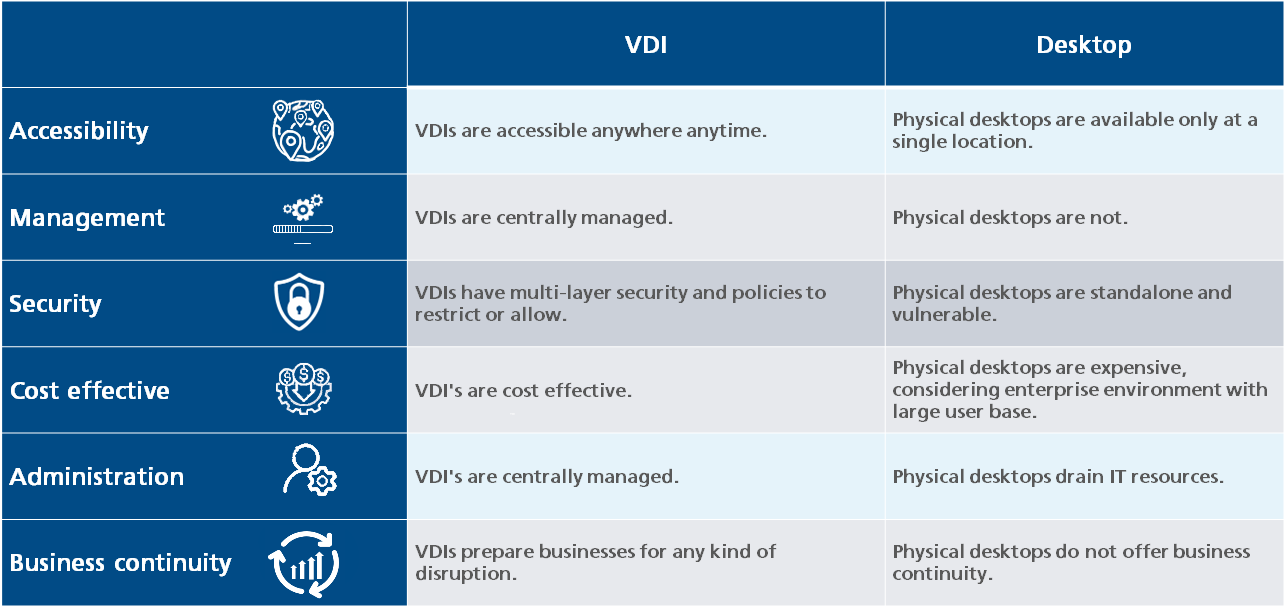
Use Cases
Many organizations are moving towards VDI and even ramped up the scale of adoption. Below are some use cases
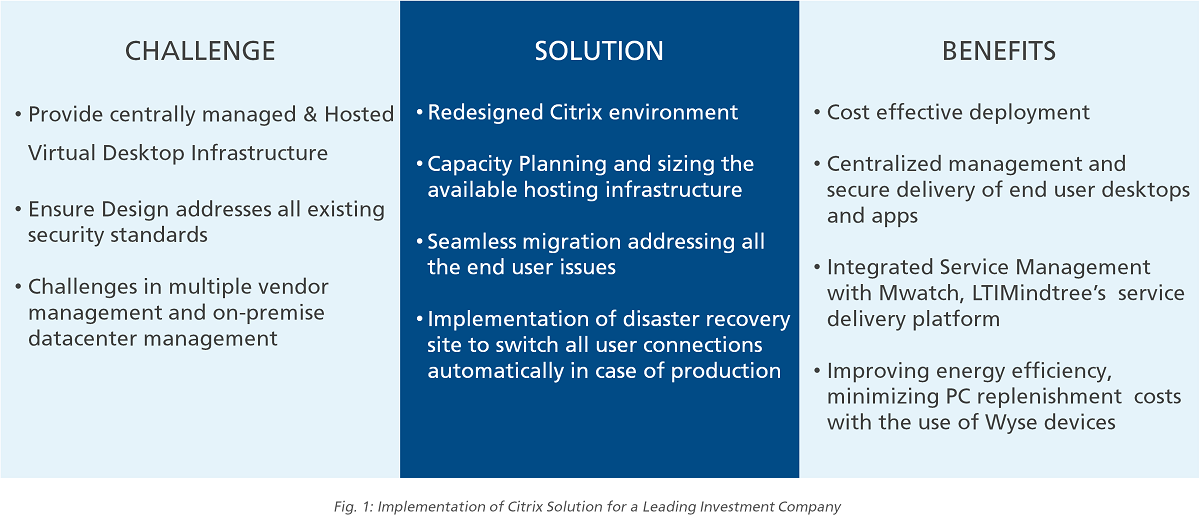
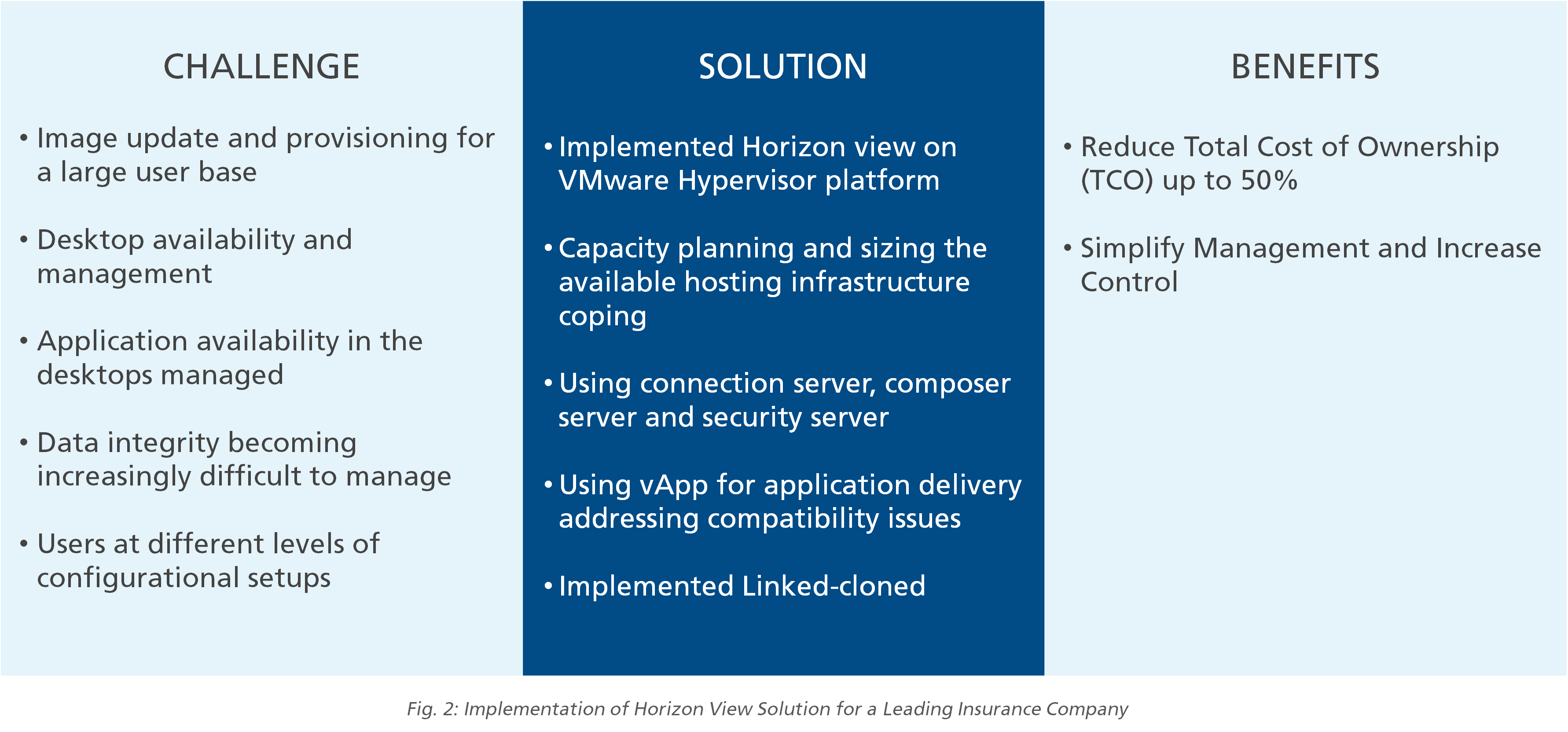
Conclusion
VDI provides a robust platform for organizations, which addresses their security, continuity, and accessibility needs. With this solution end users will appreciate the ease of access from anywhere, anytime, and from any device.
We, at LTIMindtree, with our expertise and experience have brought the best of solutions to our customers with several assessments and validations, which are the key to a successful VDI implementation. We offer a flexible and scalable VDI solution based on market leading providers with different service classification, suitable for unique enterprise business user needs Our end-to-end DaaS VDI services include infrastructure assessment, workload estimation, dependencies, phase-wise migration, and operational strategy, as per your specific environment and business requirements. Contact us to know more.
Latest Blogs
In today’s data-driven world, collaboration is no longer an option—it’s a necessity.…
Software development has evolved remarkably over the past few decades. From the days of traditional,…
Introduction The global financial services sector has recognized the importance of leveraging…
Introduction to DeepSeek As AI advances, businesses are constantly exploring new ways to harness…




